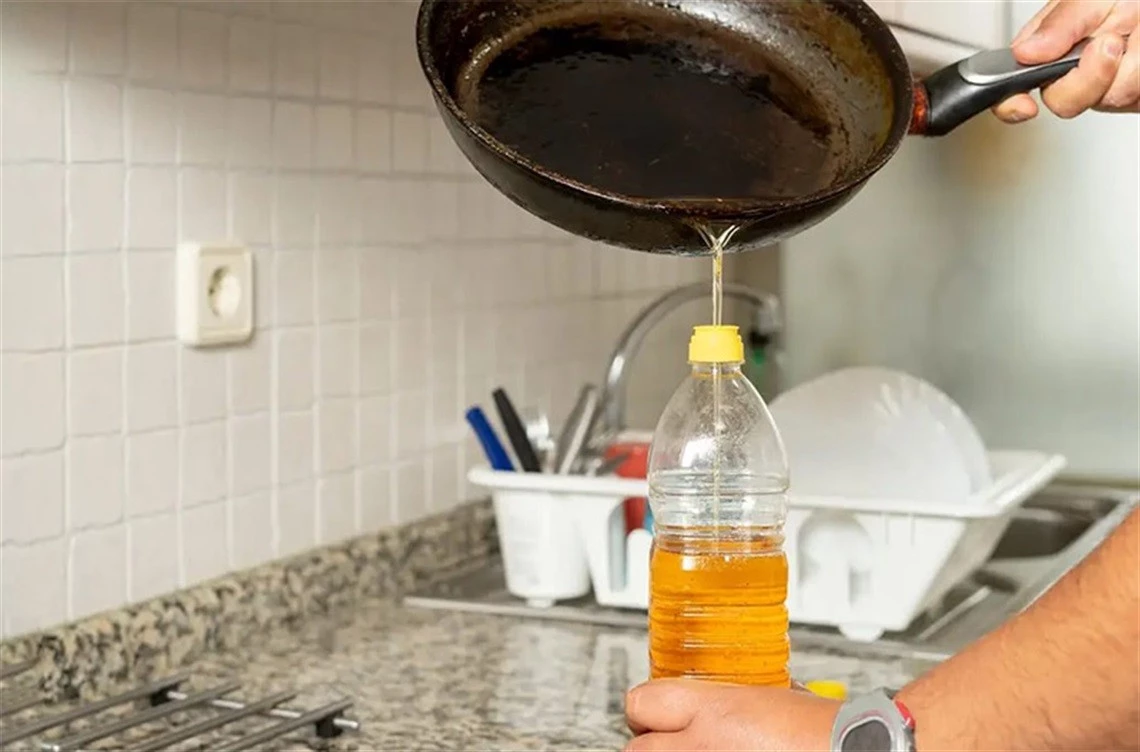RECYCLING WASTE COOKING OIL : A SUSTAINABLE SOLUTION
Used cooking oil is one of the common waste products generated from daily cooking activities. According to data from the Indonesia: Oilseeds and Products Annual 2022 publication, the consumption of cooking oil in Indonesia reaches 16.6 million tons, and the resulting used cooking oil is often reused, posing health risks. Moreover, public awareness regarding the proper management of used cooking oil is significantly low in Indonesia. This is evident from a research report by Traction Energy Asia and TNP2K in 2021, which revealed that a staggering 80.52% of used cooking oil is disposed of improperly in five major cities, particularly in Java and Bali. Improper disposal of used cooking oil can have adverse environmental effects. According to Octopus Waste Management, indiscriminate disposal can contribute to the formation of fatbergs, causing blockages in waterways, damaging soil and water quality, and hindering sunlight penetration, which in turn reduces oxygen levels crucial for marine life. Therefore, it is advisable not to discard unused used cooking oil haphazardly but rather to recycle or repurpose it.
There are several forms of recycled products that can be derived from used cooking oil. Firstly, it can be processed into biodiesel, as stated by The American Society of Mechanical Engineers (ASME), emphasizing that vegetable oil is a renewable resource that burns cleaner than fossil fuels, with no adverse environmental impacts. Secondly, used cooking oil can be transformed into soap products through the saponification process, involving the mixture of used cooking oil, NaOH (caustic soda), and water. Saponification, as explained by Chemical and Functional Properties of Food Lipids, is the hydrolysis reaction of fatty acids by a strong base (such as NaOH), resulting in soap in the form of sodium salts originating from fatty acids. Thirdly, used cooking oil can be creatively repurposed into aromatherapy candles, as detailed in the Journal of Bina Desa (2022): “Pemanfaatan Minyak Jelantah dalam Pembuatan Lilin Aromaterapi.” The process involves filtering the used cooking oil to remove residues, heating it to eliminate unpleasant odors, slowly adding stearin (150g) while stirring until fully dissolved, incorporating crayon colorants for visual appeal, and adding aromatherapy essence for desired scents. The mixture is then poured into candle molds, and after partial solidification, wicks are inserted, concluding the process by allowing the candles to fully harden. Utilizing used cooking oil for aromatherapy candle production not only showcases creativity and environmental friendliness but also generates value-added products that can serve as entrepreneurial ventures.
In conclusion, the management of used cooking oil waste in Indonesia faces various challenges, primarily rooted in the lack of public education and supportive policies. High consumption of cooking oil, with a substantial portion being reused, contributes significantly to the production of used cooking oil waste. On the other hand, improper disposal of used cooking oil has detrimental effects on the environment, including the formation of fatbergs that can damage waterways and harm marine ecosystems. Therefore, further efforts are needed to enhance public awareness regarding used cooking oil management and explore its recycling potential, whether as a biodiesel source, soap ingredient, or in the creative production of aromatherapy candles. With proper waste management techniques, used cooking oil can be transformed into a valuable resource, supporting environmental conservation efforts.
Reference:
- Kenarni, N. R. (2022). Pemanfaatan Minyak Jelantah dalam Pembuatan Lilin Aromaterapi. Jurnal Bina Desa, 4(3), 343–349. Retrieved from https://journal.unnes.ac.id/nju/index.php/jurnalbinadesa/article/view/39225
- Octopus Waste Management. (2023, September 8). Bahaya Minyak Jelantah bagi Kesehatan dan Lingkungan. Octopus. https://www.octopus.co.id/id/blog/articles/bahaya-minyak-jelantah-bagi-kesehatan-dan-lingkungan#:~:text=Minyak%20jelantah%20yang%20dibuang%20begitu,kualitas%20air%20tanah%20di%20dalamnya.
- Simpkins, M. (2023, Januari 13). What can waste cooking oil be used for?. BioUKFuels. https://bioukfuels.co.uk/blog/what-can-waste-cooking-oil-be-used-for/
- Sudaryadi, Panghegar, F., Kristiastomo, T., Radhianshah, T., Widyarini, P. (2022, April 25). Identifikasi potensi ketersediaan dan model pengumpulan minyak jelantah dari rumah tangga dan usaha mikro untuk bahan baku biodiesel: Studi lima kota di pulau Jawa dan Bali 2022. Traction Energy Asia dan TNP2K. https://tractionenergy.asia/wp-content/uploads/2023/07/Laporan-Penelitian-Minyak-Jelantah-Jawa-Bali-compressed.pdf
- USDA. (2022, Maret 23). Indonesia Oilseeds and Products Annual 2022. Global Agricultural Infoermation Network. Retrieved from https://apps.fas.usda.gov/newgainapi/api/Report/DownloadReportByFileName?fileName=Oilseeds%20and%20Products%20Annual_Jakarta_Indonesia_ID2022-0007.pdf
- Varrasi, J. (2012, Januari 19). Waste not: Used cooking oil = energy source. The American Society of Mechanical Engineers. https://www.asme.org/topics-resources/content/waste-not-used-cooking-oil-energy-source
- Zdzislaw Z. E. Sikorski, Anna Kolakowska, Anna Kolakowska, Zdzislaw Z. E. Sikorski. (2002). Chemical and Functional Properties of Food Lipids (1st ed.). CRC Press. https://doi.org/10.1201/9781003040392


